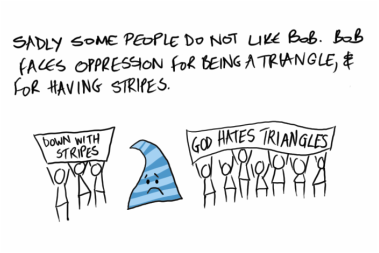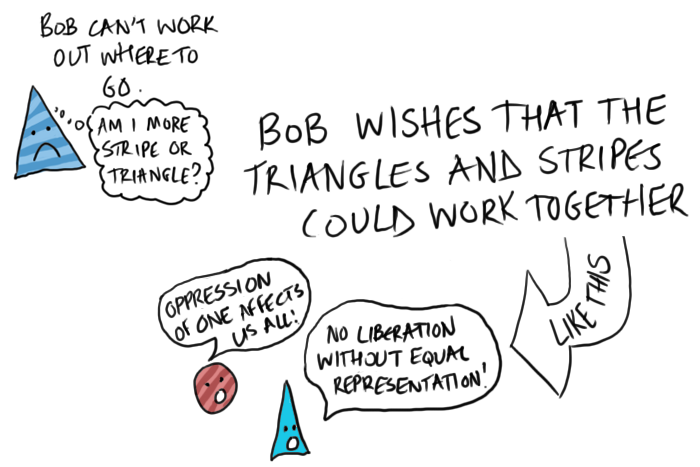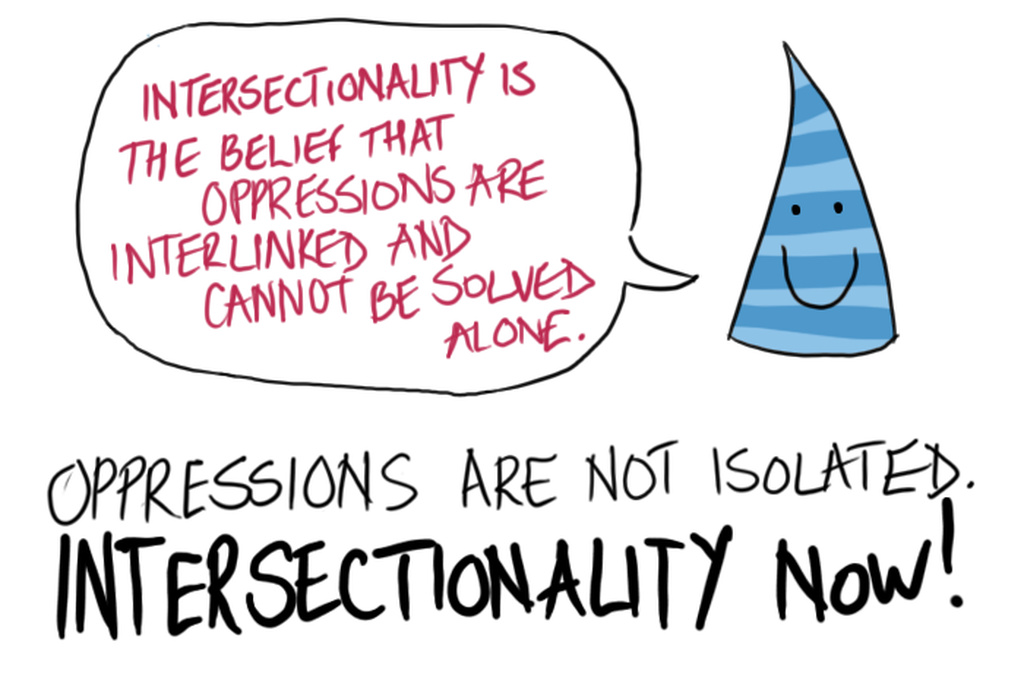This section of the website was created by Denise Pazmino
Where did Intersectionality come from? |
From the Syllabus |
|
Before intersectionality, the ideals of feminism were often centered around White women. Feminism is the advocacy of women's rights on the grounds of political, social, and economic equality to men. Feminism, yes, it sounds great. However, before intersectionality became an important part of feminism and social justice, solutions created to help women benefited white women. Without the inclusion of all women, feminism really wasn’t feminism. Although intersectionality was coined for feminist purposes, it has impacted all forms of social justices. Intersectionality helps when creating solutions for particular groups of people.
|
A central paradigm of the work of the gender studies is intersectionality. In this class, we consider it important enough that we start there! You have two readings for this day of class. The first reading assignment gives you a basic overview of intersectionality. Your second reading assignment is the source of it all: two essays by Kimberlé Crenshaw: "Demarginalizing the Intersection of Race and Sex: A Black Feminist Critique of Antidiscrimination Doctrine, Feminist Theory and Antiracist Politics" AND "Mapping the Margins: Intersectionality, Identity Politics, and Violence against Women of Color." Crenshaw is not the first feminist to theorize intersectionality and do that work. However, she is the person who popularized the expression today. There are many critiques today that professors and others have simply borrowed Crenshaw's coinage and treated it like a fad, erasing the history and politics that created the notion. We won't fall prey to that kind of criticism here so we are going to the source and reading Crenshaw today!
|
Why Intersectionality matters...When we first meet someone, we notice a variety of traits like gender, race, and age to name a few. After getting to know someone, we learn other traits such as their sexual orientation, religion, and nationality. Learning how people identify themselves is an important part of practicing intersectionality.
|
|
The theory of intersectionality was constructed by legal race scholar, Kimberle Crenshaw. Intersectionality studies how different oppressions interweave with one another. Intersectionality seeks to find out how social, cultural, and biological traits all intertwine to create the identity of an individual. If we take notice, we will see that there are a multitude of oppressed groups: women, people of color, the disabled, LGBTQ members and so on. However, we tend to overlook how all of these groups are connected. We dismiss and disregard how much oppressions overlap. Olena Hankivsky explains that “Human lives cannot be explained by taking into account single categories, such as gender, race, and socio-economic status. People’s lives are multi-dimensional and complex. Lived realities are shaped by different factors and social dynamics operating together.” If we acknowledge only a portion of someone’s identity, we are relinquishing them of other aspects that make them whole.
Intersectionality plays an important role when creating solutions for oppressed groups. If a muslim woman is raped, we must not simply acknowledge that she is a woman, but a woman of color. An Asian transgender man is not just Asian or transgender, but both. We cannot acknowledge one part of a person without the others. Intersectionality allows us to comprehend how our differences still make us alike. The acknowledgment of all interlocking subcategories is the key to addressing and solving issues that all oppressed groups face. Our society is too diverse to create a one path solution for all citizens. |
|
This section of the website was designed by Denise Pazmino, one of the curators of the site. For more about Denise, read here. For more about all of the curators and the history of the site, click here. If you would like to make additions or suggestions, please submit the contact form at the right.
|
|






